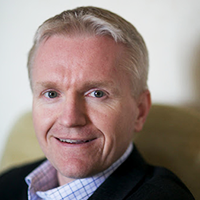Past Coverage of ACR 2016Past Coverage of ACR 2016 Return To RheumReports Home
Year in Review - Treatment Highlights
November 13 2016 2:31 PM ET — via RheumReports
This article focuses on the year in review talk presented by Professor Ingred Lundberg from the Karolinska Institute.
Tocilizumab (TCZ) for induction and maintenance of remission in giant cell arthritis: This phase 2 randomized controlled trial was published in the Lancet. Patients with new onset GCA were treated with TCZ & glucocorticoids (GC) for 52 weeks vs GC alone. The primary outcome was the percentage of patients at week 12 with a dose of GC 0.1 mg/kg/day. Complete remission was achieved in 85% in the TCZ group vs 40% in the GC alone group. After 52 weeks, 85% in the TCZ vs 20% in the GC group continued to meet the primary endpoint. The cumulative dose of prednisone was significantly lower in the TCZ group and the time to taper prednisone was significantly shorter in the TCZ group.
Two open studies of TCZ in polymyalgia rheumatica (PMR). At 12 weeks, 100% of patients in the TCZ group achieved low disease activity (LDA) and in the other study 100% achieved steroid-free remission at 6 months with an average duration of prednisone of 3.9 months in the TCZ group. IL-6 blockade may be an effective, safe, and well-tolerated treatment in patients GCA and PMR. A phase 3 trial is being presented at this year's meeting - stay tuned.
Phase 3 trials show that baricitinib, an oral targeted synthetic DMARD, is effective in patients with RA who are treatment-naive, DMARD failures, or biologic failures.
There are two studies in ankylosing spondylitis that show an impaired response to treatment with biologics in smokers vs non-smokers. Patients who have never smoked had better adherence than both current smokers and prior smokers. Furthermore, better BASDAI responses were achieved in patients who have never smoked. Smokers consistently had higher disease activity at baseline, poorer response to treatment, and worse adherence. Anti-IL-17 therapy with secukinumab in AS improves both ASAS 20 and 40 in both anti-TNF naive and anti-TNF failure patients. In anti-TNF naive patients, 68% on active treatment vs 31% on placebo achieved the primary outcome. Anti-TNF failure patients did not achieve as good a response with 50% vs 24% for PBO. Clinical response was sustained through week 52.
Patients with gout have increased risk of cardiovascular disease. In a Medicare database review, patients who used colchicine had a lower risk of CV events compared with patients who did not use colchicine. I'm not sure if this is due to the fact that colchicine reduces attacks of gout and perhaps overall stress thereby reducing the risk of CV events, or whether colchicine has an independent effect on the prevention of CV events. The authors felt that these justify an RCT of colchicine in patients with gout who are at risk of CV events.
Share This Report
About the Author

Dr. Andy Thompson is an Associate Professor at Western University and founder of Rheuminfo.com, Rheumtalks.com, and RheumReports.com.
View Full Bio





